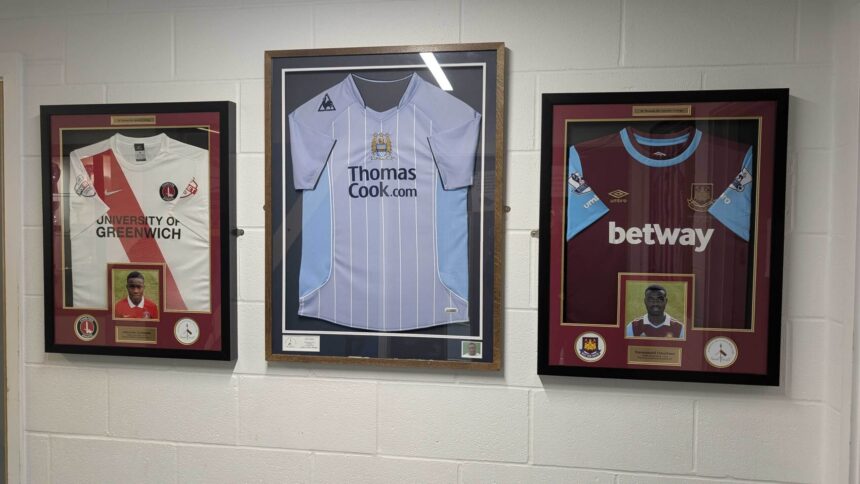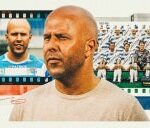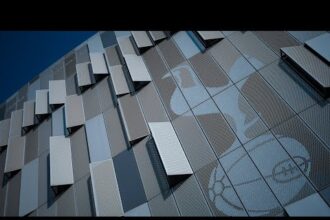Turn the corner in the corridor leading to the sports hall at St Thomas the Apostle School and Sixth Form College (STAC) and, almost hidden away out of sight, you might miss the framed, match-worn Charlton Athletic shirt.
The display also includes a photo of a young Ademola Lookman.
The reigning African footballer of the year is, without question, the most successful player to emerge from STAC, a state-funded all-boys Catholic school in Southwark, south-east London. Yet Lookman’s is just one of several jerseys displayed on that wall, illustrating the sporting achievements of so many former pupils.
Advertisement
Pride of place are those from footballers such as Dickson Etuhu — a Nigeria international who played more than 100 Premier League games for Fulham and Sunderland — and his younger brother Kelvin, who played over 200 games across the three divisions of the EFL after graduating from Manchester City’s academy. Hull City defender Cody Drameh, former Portsmouth, Queens Park Rangers, West Ham United and Scotland midfielder Nigel Quashie and ex-Southend United stalwart Michael Timlin are also commemorated.
There are jerseys belonging to Tyrone Berry, once a Crystal Palace and England youth-team player, and Emmanuel Onariase, a former STAC head boy and a graduate of West Ham’s academy. He, too, played in the EFL for several years.
Lookman, Kelvin Etuhu and Emmanuel Onariase’s shirts (Matt Woosnam/The Athletic)
Away from football, there are acknowledgements of success in other sports, with former student Dominic Mensah becoming a world champion for Great Britain as a tumbling gymnast. He now forms part of world-champion boxer Anthony Joshua’s management team.
The latest addition to the wall of fame, though, has the potential to match or even eclipse his predecessors’ achievements.
Romain Esse, the teenage forward Premier League Palace signed from local rivals Millwall, of the Championship, in a £14million ($18.1m) deal in January, and who scored with his first touch in the top flight, attended the school between 2016 and 2021 while developing his footballing talents in Millwall’s academy.
“Since I’ve been here, I reckon I could nearly field a good 11-a-side team worth of good footballers,” says the school’s head of PE, Billy Reynolds. “And a stacked full bench, too.”
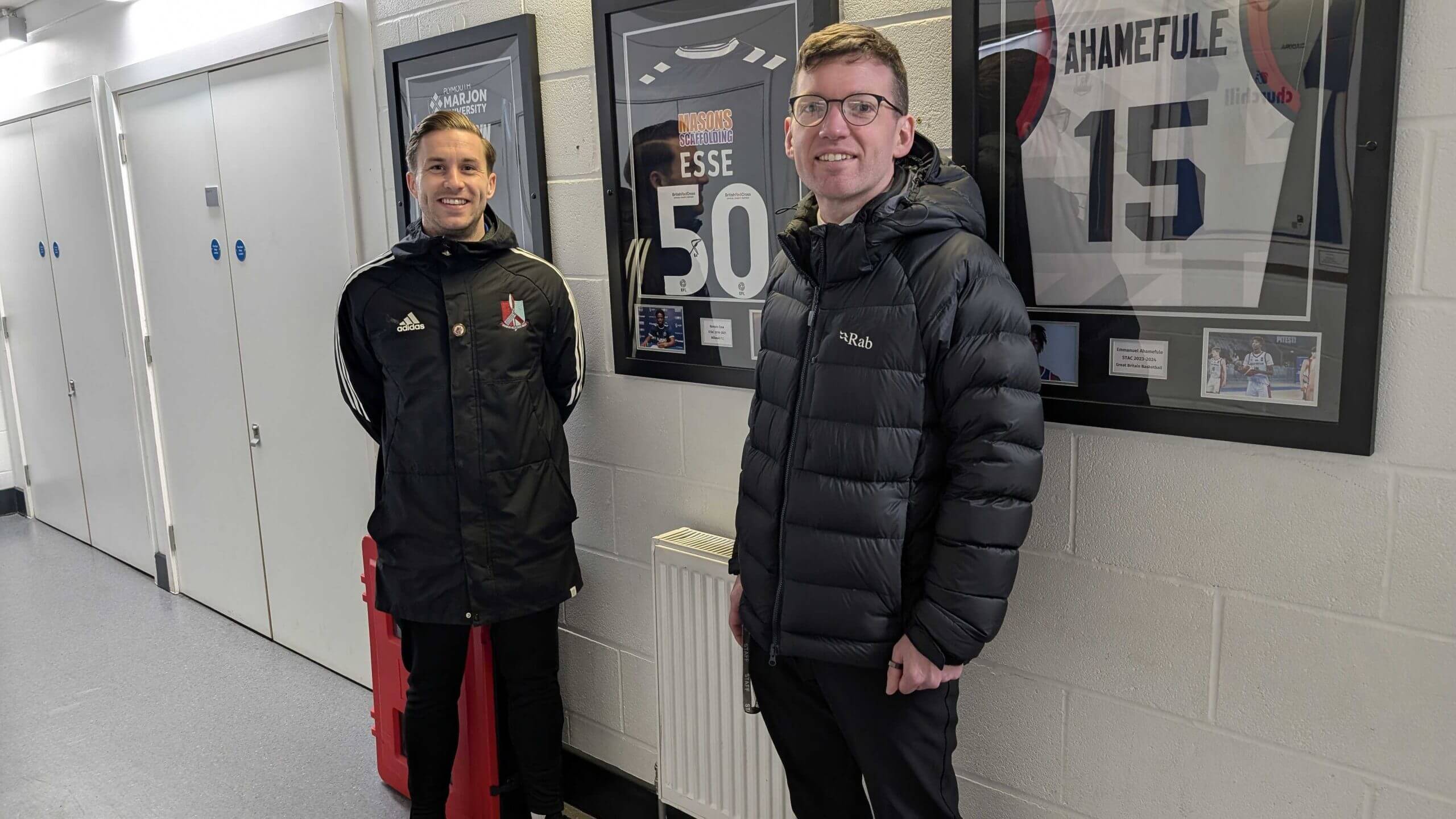
Reynolds, left, and STAC assistant head Sam Parratt in front of Romain Esse’s Millwall shirt (Matt Woosnam/The Athletic)
STAC’s is an impressive roll call. Even more so when you consider this is not a private college commanding annual fees from the children’s parents or a school funded by rich benefactors as part of an academy chain but via the local authority. Its catchment area is relatively deprived, with many of the 1,101 students facing socio-economic disadvantages. Over 40 per cent of those attending STAC are eligible for free school meals.
Advertisement
Although that puts the former students’ achievements into proper perspective — a booklet highlighting the school’s achievements notes STAC is ranked second in the country among similar schools — it is not their focus. “Something we don’t like to play on too much as a school is the narrative of poor kids from disadvantaged backgrounds,” assistant head Sam Parratt tells The Athletic. “It does them a bit of a disservice.”
Instead, they highlight their academic achievements for what they are.
That same pamphlet proudly declares STAC to be the “best school in south London”. It is graded fifth-best in Greater London and 10th in the country. Those placings are based on its ‘Progress 8’ score, which demonstrates advancement through secondary school. STAC’s score is 1.45, meaning that, on average, its students achieve almost one and a half grades higher than might be expected nationally.

(Matt Woosnam/The Athletic)
Only a few miles south of here, in Croydon, is the renowned Whitgift School, an independent school which offers sports scholarships to talented youngsters and has helped develop some of the country’s most accomplished footballers. Fees for non-boarders can be as much as £28,000 a year, although a significant number of bursaries (monetary awards) are handed out.
The two schools are not competing against each other. STAC could not hope to match the resources available via such fees. Yet staff make the most of what they have — a floodlit 3G pitch and that sports hall do not compare to the lush fields of nearby institutions such as Dulwich College, Whitgift or Trinity, also in Croydon, but nevertheless offer students an opportunity to hone their talents.
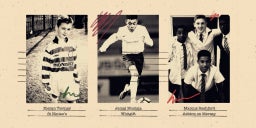
GO DEEPER
The schools helping elite British clubs shape stars like Musiala, Foden and Tierney
The cost of any repairs, Parratt explains, comes out of the PE department’s budget. Respect from students for what they have, STAC say, has helped with longevity. Their goalframes have lasted them for eight years so far. Balls, somehow, are rarely lost despite there being a road in close proximity to the pitch.
Advertisement
Where some of those local private schools have formal partnerships or loose arrangements with elite sporting clubs, STAC, a Catholic school which welcomes all faiths, is not selective. If a student happens to be talented at sport, that is a bonus — they are not sought out deliberately — and although some pupils make it in academies across the Premier League and EFL, that is an organic process.
STAC has no formal link-up with any professional clubs.
“We don’t go around local primary schools and say, ‘Can you recommend your best sportsmen to us?’,” explains Reynolds. “We develop what we get. Parents will send their kids here based mainly on academics. They’re not going to do it because we’ve won a London Cup two years on the trot.
“Sport on the side is a bonus. They’re not only getting their academics but also a good extracurricular and core PE sports programme, especially with all the competitions we enter outside of school.”
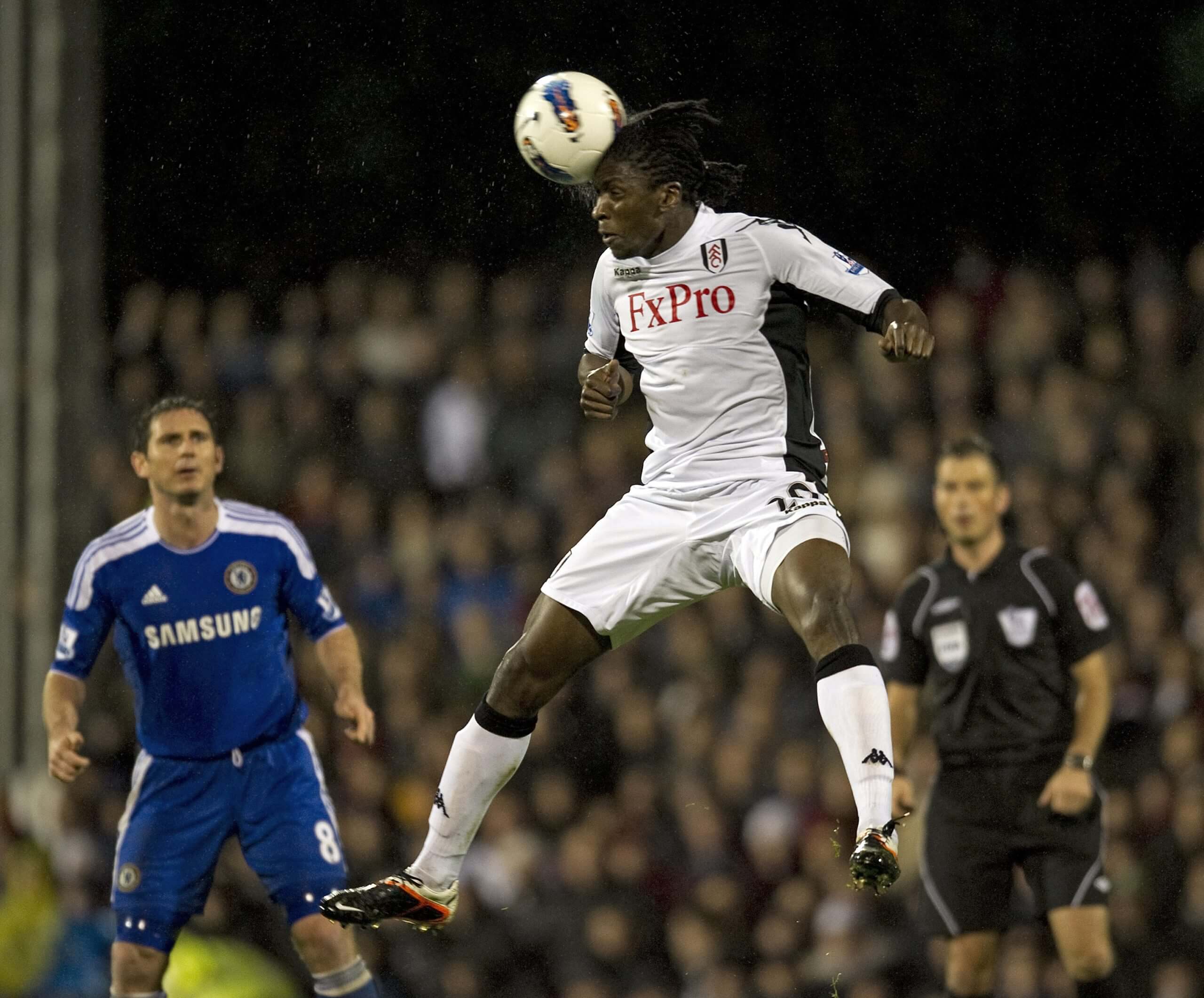
Dickson Etuhu during his Fulham days (Adrian Dennis/AFP via Getty Images)
Even so, finances are tight with Parratt and Reynolds explaining how costs have doubled, even tripled, following the Covid-19 pandemic and the UK’s 2020 departure from the European Union.
“The cost of flights is mad,” Reynolds says. “We are an academic school, so getting time off for sport is hard. Even if we do it in half term… airline prices and tour companies want a big percentage now to regain what they’ve lost over the last few years. It’s so hard to get the boys out to international tournaments. We are looking at going to the north of France maybe later this year or next year.
“A lot of the boys play district football — every year, we get five or six per year-group and they go to northern France and Germany with the south London representative team, so at least they get some international trips. With us, it’s so hard. It almost needs to be organised two years in advance just to set a payment plan up to enable parents to afford it.”
Advertisement
Academia and sport go hand-in-hand, even if the former is the primary focus, helping instil strict discipline at the school.
Step out of line in the classroom and there will be no competing in extracurricular activities, such as the frequent football fixtures. Involvement in them is a perk for good behaviour. It appears to be working: the cleanliness of the school, inside and out, is striking, while there is a hush during lesson times, even among the pupils in their PE kits queueing up to file into the sports hall.
“They thrive as a result of the strictness,” says Parratt. “They get that and the parents get that as well. Some of our naughtiest kids are the ones that love the school the most, because they know where they stand. If they’re being held to account, it’s for their benefit.
“If a sports team wins a cup, we get them to stand in the middle of the school when they are lining up at the beginning of the day and everyone will turn to face them and give them a round of applause. They have the cup and take a photo and are celebrated in the school newsletter. All the fixtures are in there along with sports successes. There’s a lot of visibility in all of those successes.”
That word, discipline, almost causes Reynolds to shudder.
“I don’t like using it,” he says. “It’s about teaching them what a good human being is like.”
Step out of Queens Road Peckham train station and you are greeted by a banner hanging from the railings on the opposite side of the road proudly highlighting how well nearby STAC did in a recent inspection by OFSTED, the UK government’s schools watchdog.
The review took place at the end of last year. It rated the school as outstanding; not just in its academic progress, bringing that 10th best school in the country grading, but also in terms of continued sporting success.
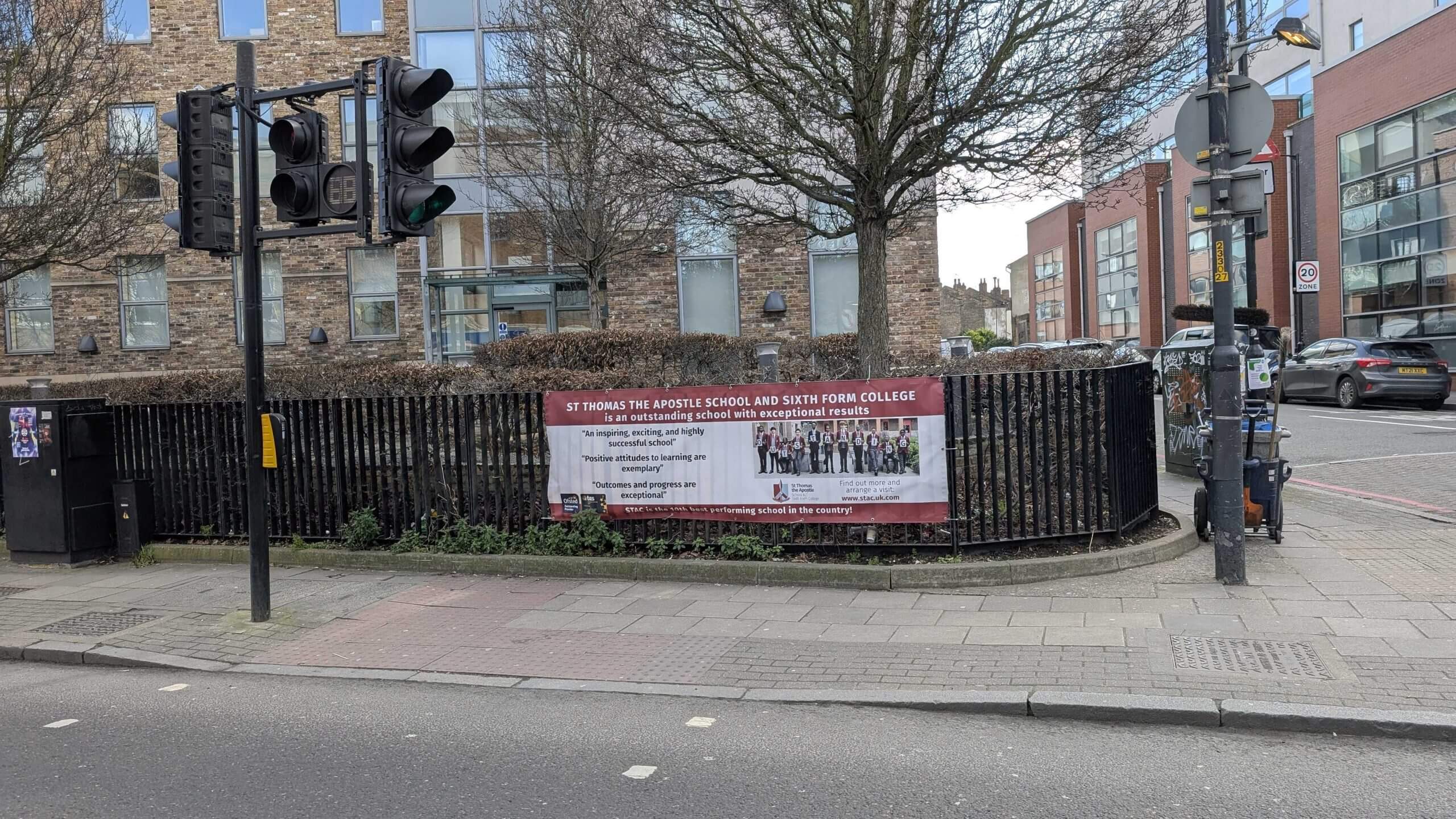
(Matt Woosnam/The Athletic)
Such is the relationship with its alumni, that, when they can spare time in their schedules, many return to talk to STAC’s current students. That includes Lookman, the London-born Nigeria international forward who now plays for leading Italian club Atalanta.
His story is a valuable one for the school.
Advertisement
He achieved excellent academic results at STAC, with four A*s and five As in his GCSEs, before being picked up late, at 17, by Charlton. He rose rapidly through their academy to the first team and made 49 appearances before a Premier League move to Everton at age 19. A further 48 appearances on Merseyside led to a 2019 transfer to Germany’s RB Leipzig and subsequent Premier League loans with Fulham and Leicester City, until he settled on a permanent deal with Atalanta in August 2022.
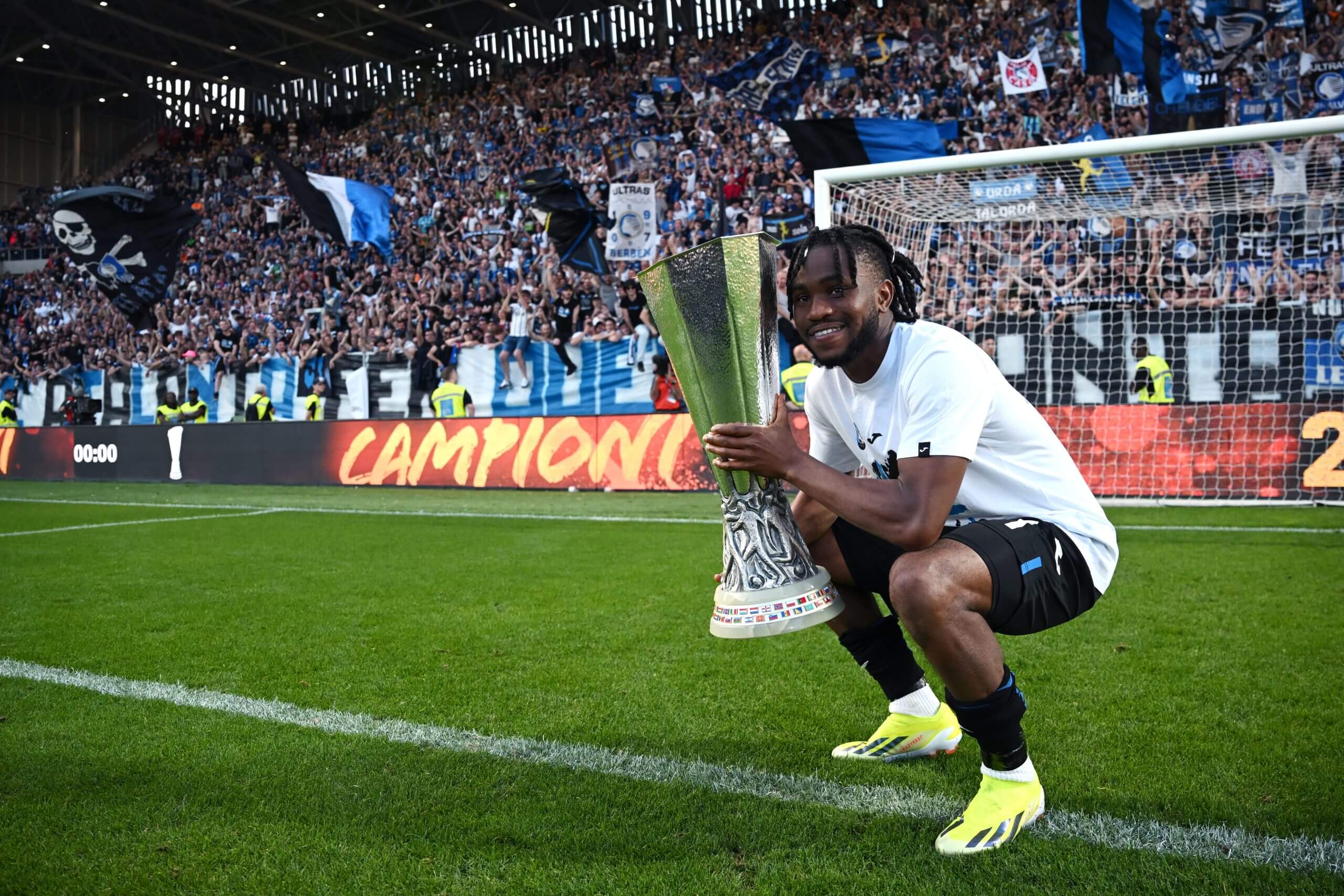
Lookman holds the Europa League trophy (Image Photo Agency/Getty Images)
His 27 appearances for Nigeria, where his parents were born, over the past three years have yielded eight goals. He won the Europa League with Atalanta last season, and followed the likes of Samuel Eto’o, George Weah, Yaya Toure and Didier Drogba in being voted African Footballer of the Year.
The 27-year-old forward serves as an inspiration to those with ambitions at STAC. He has also sponsored the school’s football kits across all age groups.
A huge thanks to @Alookman_ for sponsoring our new football kits for all year groups – as you can see, our students are very grateful! 🙏 pic.twitter.com/VSuBjT0DaA
— St Thomas the Apostle School (@stacsouthwark) April 16, 2024
There are up to 10 STAC students from across the year groups who are attached to or on trial at club academies, including Premier League quartet Chelsea, West Ham, Palace and Brighton & Hove Albion, Millwall in the second tier, Charlton of League One and AFC Wimbledon in League Two, the fourth division of English football.
Esse is another who hasn’t abandoned his roots since breaking into the professional game. The school is waiting on Palace and England age-group shirts from the under-18, under-19 and under-20 international to add to its collection.
“Esse and Lookman come back to the school to show their appreciation,” says year-nine student Jonathan, who is in West Ham’s academy. “They’ve grown up playing sports alongside their education. That could be me in a few years’ time. I can get my GCSEs and make it as a pro.”
Neither Parratt, who was Esse’s music teacher in year eight, nor Reynolds pinpoint a quality he showcased on a football pitch as their outstanding memory of him. There is admiration and appreciation for those sporting successes, yes, but it’s the character he showed during his time here that lingers with them. Lookman had graduated by the time they joined the staff but his academic achievements are an ongoing source of pride.
Advertisement
“Ademola was academically driven because there was not even a thought back then about him taking up a scholarship let alone a professional contract,” says Reynolds. “Emmanuel (Onariase) was the same — his academic results were excellent. Romain’s were very good as well.
“Romain was humble. He was very quiet but had a willingness to learn and was very respectful; an all-round good person. Even though he was at a professional club, he would always turn up, even if he had Millwall training or games the night before.
“His talent spoke for itself. He played a year, sometimes two years up (from his actual age group) and made a big contribution to their success.
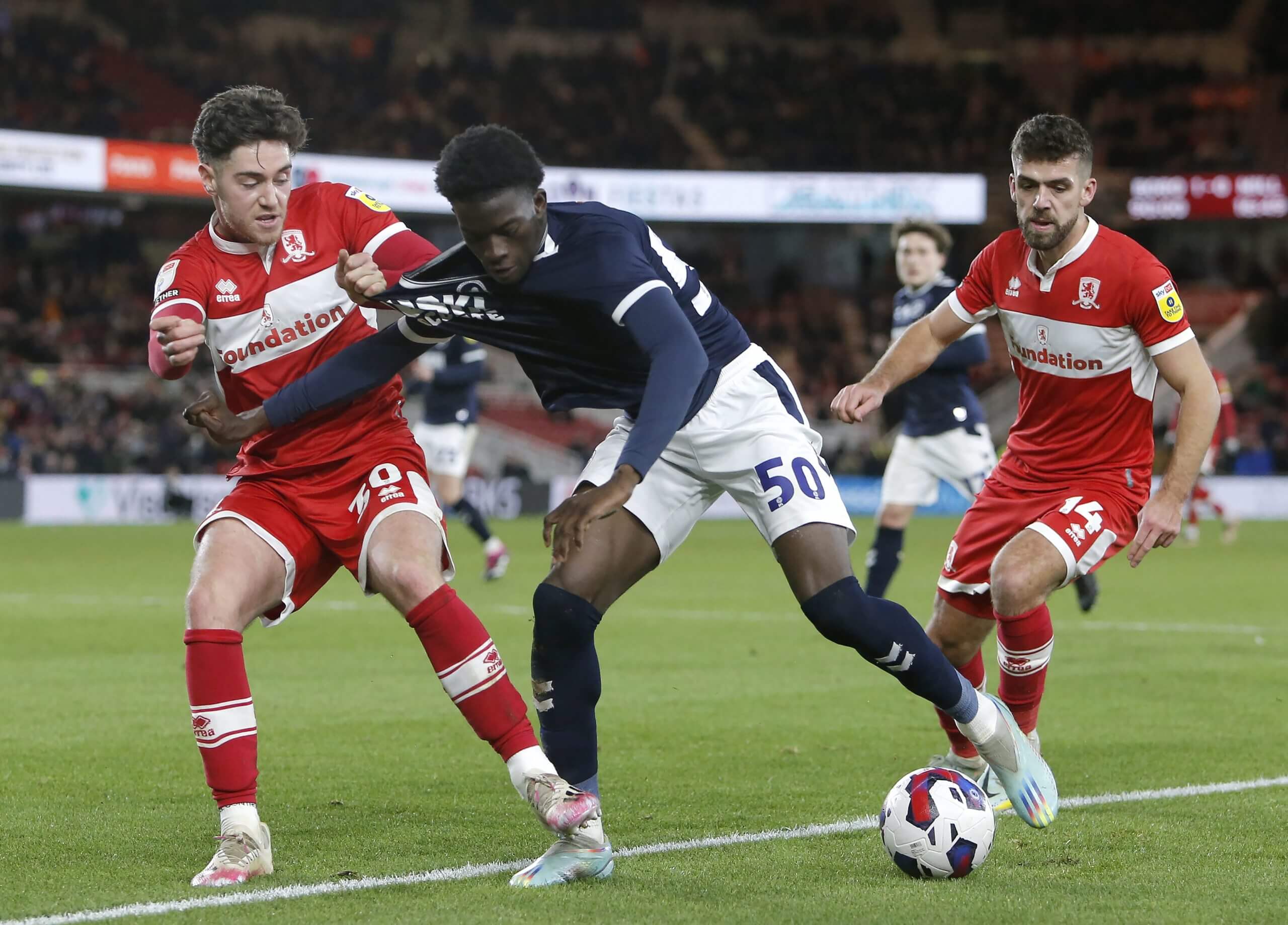
A young Esse takes on the Middlesbrough defence with Millwall in 2023 (Will Matthews/PA Images via Getty Images)
“He wanted to get involved in school teams and be a part of playing with his friends. He understood the importance of that. For five years, he trained in every session and played in every game possible.
“Even in subjects they didn’t enjoy, they would never disrupt. They would never give anything below 100 per cent and would just get on with it.”
Parratt recalls Esse’s attitude towards music fondly. “It wasn’t going to be the thing he was going to do forever, but he took it for what it was and tried hard. It was, ‘I’m going to try my best at everything I turn my hand to’. His group of friends were a really good bunch and they played off each other.”
When he visited last year, Esse asked to park at the back of the school, crept surreptitiously through the corridors and took a seat in Reynolds’ office. There was no desperation to be noticed. Quite the opposite, in fact. “The last time he was here, our year sevens were playing in a cup game and we watched that together,” says Reynolds.
Esse would supply tickets for Millwall matches, something STAC students otherwise would struggle to afford. “Most of them only watch football on television, so they loved it.”
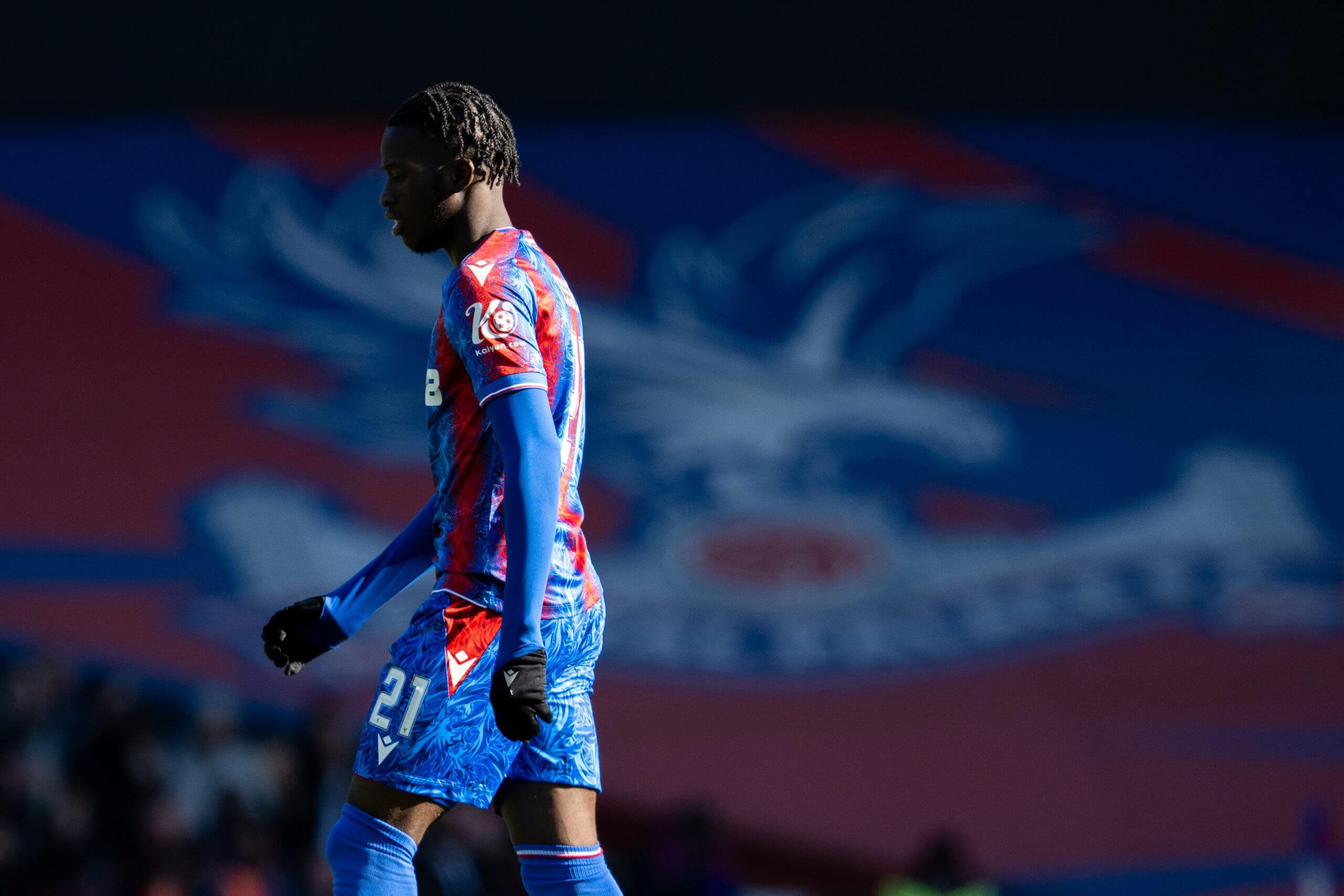
Esse moved across south London to Palace in January (Sebastian Frej/MB Media/Getty Images)
Producing good people is vital. Parratt and Reynolds hope Esse acts as inspiration off the pitch as well as on it.
Their strict approach to discipline may not be to everyone’s taste, but there is no denying they have been successful. The pride that comes when academic achievement meets sporting success could not be more obvious.
Advertisement
Esse is just the latest in a long line of examples and perhaps it won’t be long before there are more shirts adorning that wall of fame.
Yet that will only ever be considered a bonus.
“It’s not about us producing professional athletes,” Reynolds adds. “That’s the icing on the cake. It’s about us getting boys here to love sport.”
(Top photos: Rob Newell – CameraSport via Getty Images; Matt Woosnam/The Athletic)


